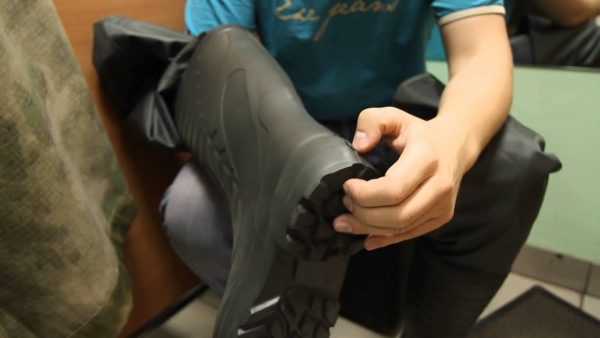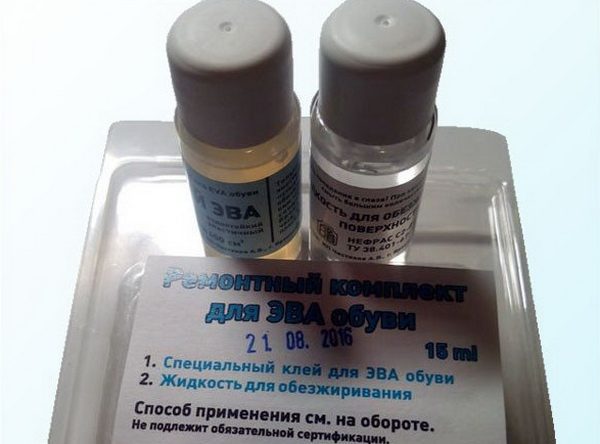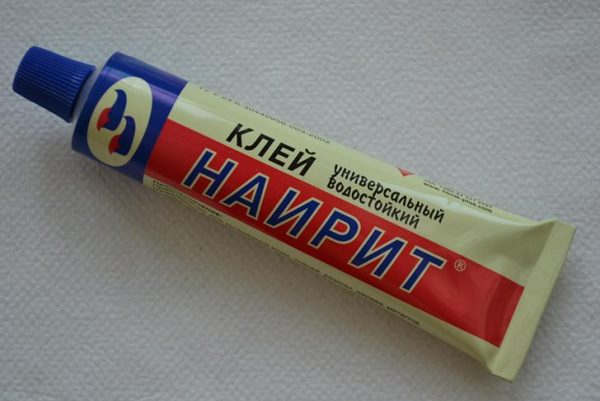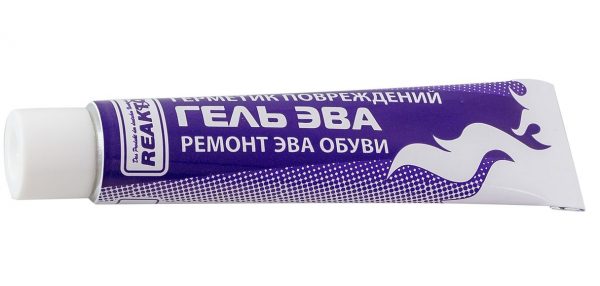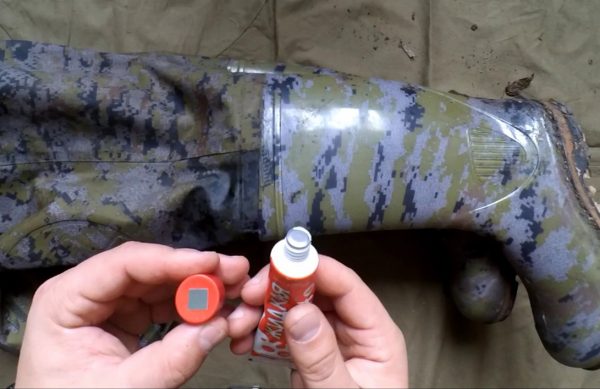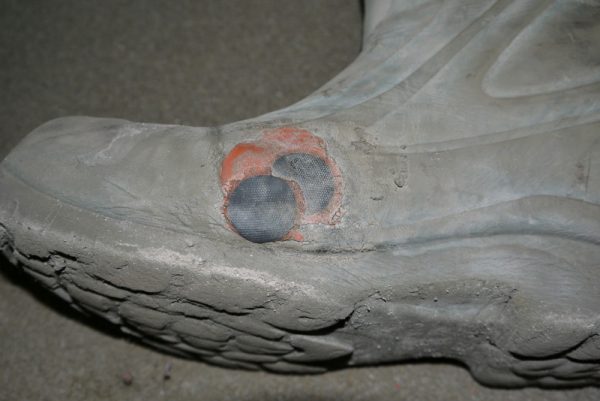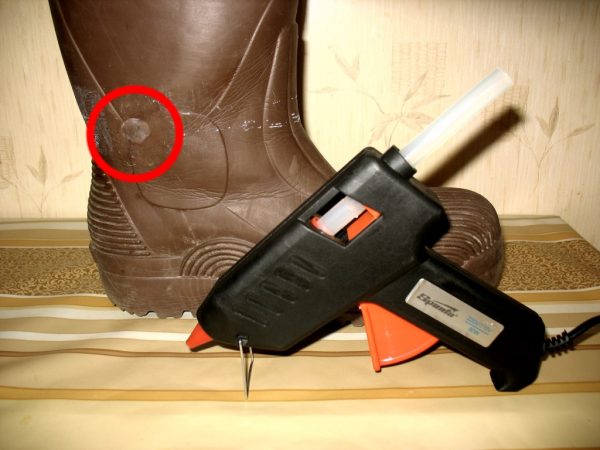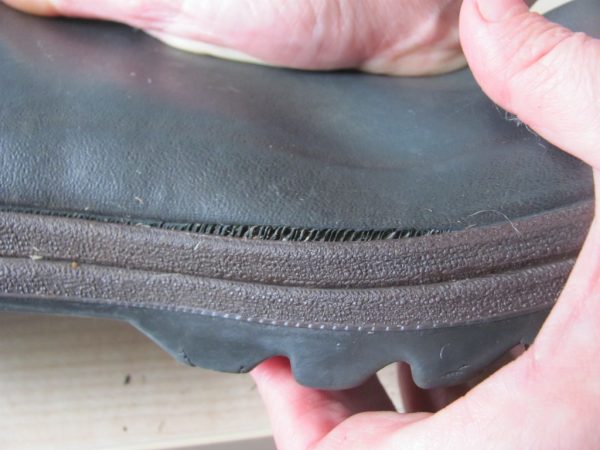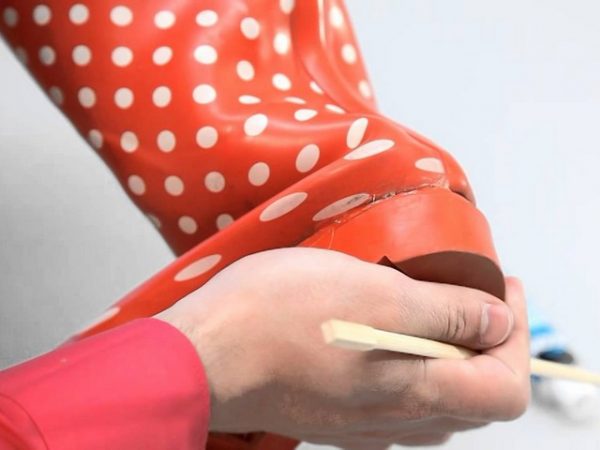For autumn and spring slush there is no better shoe than rubber boots. Now in stores you can find shoes not only from familiar rubber, but also from new materials - PVC, EVA. They are more durable, wear-resistant, but any product is easy to damage when handled carelessly. It is enough to cling to the wire, step on the glass, and the shoes will be spoiled. There are ways to glue rubber boots, so throwing away a couple immediately is not recommended.
- Preparation of boots for repair and selection of accessories
- Glue selection
- Determination of the place of damage
- Rules for working with EVA
- How to seal PVC boots
- Sealing rubber boots
- Fishing method
- Cyclist method
- Automotive method
- Hot method
- Features of gluing the sole
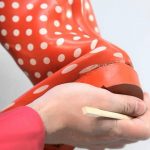
Preparation of boots for repair and selection of accessories
Repair shops rarely accept rubber shoes for work. If there is a hole, a cut, it is better to try to eliminate the problem at home. First you need to prepare the damaged thing for repair - rinse it well to remove all dirt, dust, then dry thoroughly. Immediately before gluing, the damaged area should be degreased with alcohol and vodka, although in most cases washing the product with detergents is sufficient.
Drying shoes made of PVC, EVA, rubber should be done in a natural way, away from heat sources. If you put the boots on a hot battery, there is a risk of deformation, damage to the appearance, then the restoration will be difficult. Dry, wash your boots carefully so as not to increase the area of damage.
To repair the boots, such materials and devices will be required (in different cases the set will be different):
- sandpaper with fine grain;
- protective gloves;
- adhesive with high connecting ability;
- wipes to remove excess glue;
- a piece of fabric;
- patch made of waterproof material;
- construction, household hair dryer.
There are ready-made repair kits for repairing EVA boots, however, assembling them yourself is much cheaper than buying.
to contents ↑Glue selection
Some people to restore the integrity of the boots, without hesitation, buy adhesives such as "Moment", other universal compounds. In fact, many of them are poorly suited for rubber and can even spoil this material. Superglues, in spite of their water resistance, have low elasticity, therefore, when the boots are used, the adhesive joint will quickly collapse.
You can achieve a good result only with the help of special glue for rubber, PVC, EVA, which provides a reliable sealing effect. You can find such tools in stores for fishermen, motorists. They eliminate the hole, protect the shoes in the future, prevent the appearance of new defects in the exposed areas.
Good adhesives for shoes are Desmokol and Nairit, which contain artificial rubbers and urethane resins. They are quite flexible, have high adhesion to most shoe materials, and are even suitable for repairing soles. Of the "Moments", only the "Moment Marathon" is suitable for work, which includes special additives and is able to seal any defects in rubber products. Also on sale is the liquid patch adhesive, ideal for PVC: it eats into the structure of the material, tightly merging with it, forming a single whole.When using such glue there is no need to apply patches.
How to seal winter EVA fishing boots? The best choice will be the glue of the same name (“EVA shoe glue”) in a white tube, its price is about 130 rubles. The tool is useful for emergency repair of boots for fishing, hunting. The main characteristics of the composition:
- microporous structure of the adhesive joint after drying, which does not release heat even at subzero temperatures;
- water resistance, the possibility of direct contact with moisture;
- easy washing, non-susceptibility to clogging with dirt;
- yellowish color, which disappears after drying (the seam will be transparent and invisible);
- lack of spreading, rather dense texture;
- the ability to tightly glue punctures, tears, damage along the bends, on the sides and corners;
- long service life;
- economical consumption.
to contents ↑The glue has a minus - it can not be used to repair boots made of PVC or other products made of polyvinyl chloride. It will also fail to attach the PVC patch to the EVA with this glue, it will not hold.
Determination of the place of damage
To properly repair a damaged boot, to begin with, localize the place of holes, cracks. The easiest way is to immerse the boot in water. In the area of the hole, air bubbles begin to come out. First you need to tightly twist the top, "pumping" air into the product. A puncture must be marked or a match inserted to clearly see the problem.
Rules for working with EVA
Only glue based on the same material can be repaired qualitatively by EVA products (“foam”, foam rubber, as it is called), since it impregnates the porous structure and merges with it. Patch for damage to a small, medium size is not needed. It will be enough to apply glue, and the crack will close. For large breaks, it is better to purchase a new pair of boots. Work with glue with gloves. Do not use the product until the glue has completely dried.
The sequence of work is as follows:
- to clean the puncture area with sandpaper so that it becomes rough (if a patch is used, also peel it off, the glue will not hold on the glossy surface);
- squeeze the damage zone of the product so that the edge of the puncture crawls out, so the quality of the seam will be higher (it is better to do this by dipping your hand inside the boot)
- apply glue to the defect, join its edges or apply a patch oiled with glue;
- serious gaps are best glued with two patches - on the inside and outside;
- put on top of the defect area a piece of clean cloth, put the load;
- if there are two patches, first place a solid object inside the boot to press the first patch, then fix the glued external element.
Most adhesives require aging for 24 hours - so much time is needed for polymerization to take place, and the product was ready for use again.
to contents ↑How to seal PVC boots
Choosing the right glue, you can start repairing boots made of polyvinyl chloride. The patch is allowed to be cut from ordinary rubber, and adhesives of the "Liquid patch" type are used at all without applying the patch. The place of the defect is treated with sandpaper to roughen, degreased with acetone, and dried. Lubricate the patch and base with glue, wait a few minutes, press a piece of rubber to the defect. If polyurethane glue is used, it is recommended to heat it with a hairdryer and only then attach a patch, so the bonding place will be more durable.
to contents ↑Sealing rubber boots
To repair ordinary rubber boots, you can use one of the popular methods.
Fishing method
In shops for fishermen special rubber adhesives are sold. They are ideal for repairing rubber products, including those in contact with water. The exact instructions are always attached to the glue, it must be strictly observed. Usually, first a careful sanding of the surface is required, then acetone degreasing is carried out. The patch is glued only if there is a large defect, and small cracks are poured with glue without a patch. Drying time is observed without reduction, otherwise the glue line will not be able to gain the necessary strength.
to contents ↑Cyclist method
Fans of cycling often have a special repair kit, which includes glue, patch, brush for applying funds, sandpaper. These devices are suitable not only for repairing a broken bicycle chamber, but also for sealing torn boots. The technology will be similar:
- sanding;
- degreasing with acetone;
- cutting the patch according to the size of the defect (plus allowances of 1 cm on each side);
- uniform application of glue to the surface and patch;
- applying latki;
- fixation;
- waiting for the glue to dry.
Some adhesives allow you to use the product after a couple of hours. Although it is better to wait a day to improve the adhesion quality, so the glue line will be stronger, more durable.
to contents ↑Automotive method
Sometimes shoes, boots made of rubber or EVA crack on the folds. At such a prominent place, the patch will not look aesthetically pleasing, spoil the appearance of the shoe. For a more accurate repair, it is worthwhile to purchase automotive adhesive sealant, polyurethane or epoxy composition and apply it without applying a patch. The easiest way to buy a transparent composition, it will not be noticeable on the product. Done Deal automotive glue, which is sold in any car shop, has proven itself well. It firmly holds the gluing place, protects the shoes from moisture inside, thanks to the elasticity is not destroyed with further bending of the material.
to contents ↑Hot method
To perform hot bonding, a vulcanizer and a piece of crude rubber will be required. Despite the complexity, the quality of the repair will be at a high level, the patch will stick tightly. Crude rubber is soaked in gasoline for 10 minutes, laid out on a defect, clamped with a vulcanizer press. The device is turned on for half an hour, then turned off. After complete cooling, the press is removed, and the product will be ready for use.
to contents ↑Features of gluing the sole
The most difficult repair is to be done if the sole is damaged. Of course, you can just repair a crack, a puncture, pouring them with glue, but the quality of bonding will be low, as well as durability. Enough of such a “patch” for 1-2 outlets in wet weather. You can also carry out repairs in another way:
- take a piece of nylon;
- insert the material into the crack;
- heat the soldering iron, seal the crack.
If the defect is glued in this way, the sole will last longer, but it is unlikely that even one season will be able to depart in the boots. It is better to pre-process the puncture on the grinding machine to make the place smoother. After you need to degrease the sole, fill the hole with epoxy glue from the outside and from the inside. After a day, an insole should be placed inside the boot, and shoes can be used.
In order for the repaired boots to serve for a long time, it is important in the future to properly care for them. Shoes should be washed and dried after returning from the street, periodically treated with a water-glycerin solution. Drying should be done away from the battery so that the boots do not deform. It is better to store them out of season in the box in which they were sold, stuffed with newspapers - so the couple will retain their shape and attractive appearance.

